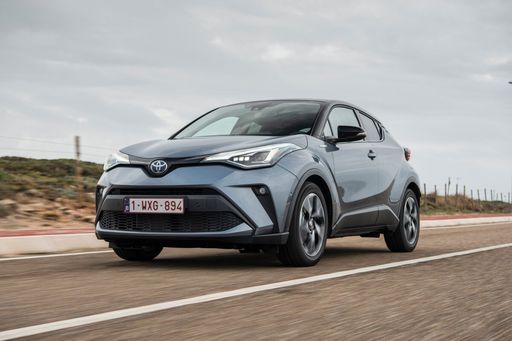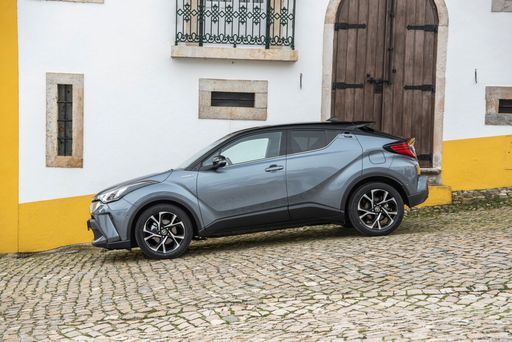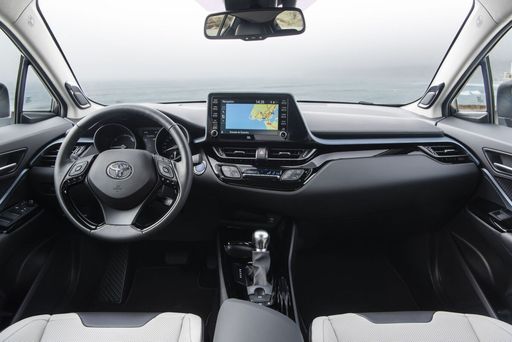Ford Puma vs Toyota C-HR – erot ja hinnat vertailussa
Kustannukset ja kulutus
Taloudellisuudessa on mielenkiintoisia eroja näiden kahden mallin välillä.
Ford Puma on hinnassa jonkin verran edullisempi – sen lähtöhinta on 28900 €, kun taas Toyota C-HR maksaa 34000 €. Ero on noin 5090 €.
Myös polttoaineenkulutuksessa näkyy ero: Toyota C-HR kuluttaa 0.80 L ja on siten ratkaiseva taloudellisempi kuin Ford Puma, jonka kulutus on 5.40 L. Ero on noin 4.60 L /100 km.
Toimintamatkassa Ford Puma suoriutuu ratkaiseva paremmin: se yltää jopa 376 km:een, noin 308 km enemmän kuin Toyota C-HR.
Moottori ja suorituskyky
Moottorin alta paljastuu, kumpi malli on urheilullisempi ja kiihtyy paremmin.
Moottoritehossa Toyota C-HR on huomattava etulyöntiasemassa – 223 hv verrattuna 168 hv:een. Ero on noin 55 hv hv.
Kiihdytyksessä 0–100 km/h on nopeampi – se saavuttaa 100 km/h ajassa , kun taas tarvitsee . Ero on noin sekuntia.
Huippunopeudessa Ford Puma on pienessä määrin edellä – se yltää 210 km/h:een, kun taas Toyota C-HR saavuttaa 180 km/h. Ero on noin 30 km/h.
Tila ja käytännöllisyys
Perheauto vai arjen kumppani – kumpi tarjoaa enemmän tilaa, mukavuutta ja käytettävyyttä?
Istuimet: tarjoaa enemmän istumapaikkoja – vs. .
Omapainossa Ford Puma on pienessä määrin kevyempi – 1316 kg verrattuna 1505 kg:een. Painoero on noin 189 kg.
Tavaratilan koossa Ford Puma tarjoaa pienessä määrin enemmän – 523 L verrattuna 447 L:een. Ero on noin 76 L.
Maksimikantavuudessa Ford Puma pärjää kevyt paremmin – jopa 1283 L, noin 128 L enemmän kuin Toyota C-HR.
Kantavuudessa Ford Puma on tuskin havaittava parempi – 469 kg verrattuna 425 kg:een. Ero on noin 44 kg.
Kuka voittaa vertailun?
Toyota C-HR osoittautuu olevan voittaa vertailun selvästi ja saa siksi tittelin DriveDuel Champion!
Tässä vertailussa Toyota C-HR on monipuolisempi kokonaisuus.
 @ Toyota Motor Corporation
@ Toyota Motor Corporation
Toyota C-HR
Kustannukset ja kulutus
Näytä yksityiskohtainen analyysi
Moottori ja suorituskyky
Näytä yksityiskohtainen analyysi
Mitat ja kori
Näytä yksityiskohtainen analyysi
Ford Puma
Ford Puma on ketterä ja trendikäs pieni crossover, joka yhdistää persoonallisen muodon ja arkikäytössä toimivan fiksuuden. Ajettavuus on yllättävän eläväistä ja sisustus ovelan käytännöllinen — erinomainen valinta ostajalle, joka haluaa arkeen ripauksen hauskuutta ilman turhaa pröystäilyä.
Tiedot @ Ford Motor Company / Ford Media Center
@ Ford Motor Company / Ford Media Center
 @ Ford Motor Company / Ford Media Center
@ Ford Motor Company / Ford Media Center
 @ Ford Motor Company / Ford Media Center
@ Ford Motor Company / Ford Media Center
 @ Ford Motor Company / Ford Media Center
@ Ford Motor Company / Ford Media Center
Toyota C-HR
Toyota C-HR erottuu katukuvassa rohkealla ja kulmikkaalla muotoilullaan, joten se sopii ostajalle joka haluaa autoltaan persoonallisuutta. Sisätilat ovat käytännölliset ja kaupunkiajossa ketterät, eikä se yritä olla seikkailumaasturi vaikka näyttäisikin siltä — täydellinen valinta tyylitietoiselle arjen kuskille.
Tiedot @ Toyota Motor Corporation
@ Toyota Motor Corporation
 @ Toyota Motor Corporation
@ Toyota Motor Corporation
 @ Toyota Motor Corporation
@ Toyota Motor Corporation
 @ Toyota Motor Corporation
@ Toyota Motor Corporation
 @ Toyota Motor Corporation
@ Toyota Motor Corporation
 @ Ford Motor Company / Ford Media Center
@ Ford Motor Company / Ford Media Center
|
 @ Toyota Motor Corporation
@ Toyota Motor Corporation
|
|
|
|
Kustannukset ja kulutus |
|
|---|---|
|
Hinta
28900 - 42400 €
|
Hinta
34000 - 50000 €
|
|
Kulutus L/100km
5.4 - 5.9 L
|
Kulutus L/100km
0.8 - 5.1 L
|
|
Kulutus kWh/100km
13.1 - 13.9 kWh
|
Kulutus kWh/100km
-
|
|
Sähköinen toimintasäde
361 - 376 km
|
Sähköinen toimintasäde
68 km
|
|
Akun kapasiteetti
43 kWh
|
Akun kapasiteetti
-
|
|
CO2
0 - 135 g/km
|
CO2
17 - 115 g/km
|
|
Polttoainesäiliön tilavuus
42 L
|
Polttoainesäiliön tilavuus
43 L
|
Mitat ja kori |
|
|---|---|
|
Kori
SUV
|
Kori
SUV
|
|
Istuimet
5
|
Istuimet
5
|
|
Ovet
5
|
Ovet
5
|
|
Omamassa
1316 - 1563 kg
|
Omamassa
1505 - 1755 kg
|
|
Tavaratila
456 - 523 L
|
Tavaratila
350 - 447 L
|
|
Pituus
4186 - 4226 mm
|
Pituus
4362 mm
|
|
Leveys
1805 mm
|
Leveys
1832 mm
|
|
Korkeus
1550 - 1555 mm
|
Korkeus
1558 - 1564 mm
|
|
Maksimi tavaratila
1216 - 1283 L
|
Maksimi tavaratila
1076 - 1155 L
|
|
Kantavuus
367 - 469 kg
|
Kantavuus
375 - 425 kg
|
Moottori ja suorituskyky |
|
|---|---|
|
Moottorityyppi
Sähkö, Bensiini MHEV
|
Moottorityyppi
Täyshybridi, Plug-in hybridi
|
|
Vaihteisto
Automaatti, Manuel
|
Vaihteisto
Automaatti
|
|
Vaihteiston tyyppi
Alennusvaihteisto, Manuaalivaihteisto, Kaksoiskytkin automaatti
|
Vaihteiston tyyppi
CVT-vaihteisto
|
|
Vetotapa
Etuveto
|
Vetotapa
Etuveto, Neliveto
|
|
Teho hv
125 - 168 hv
|
Teho hv
140 - 223 hv
|
|
Kiihtyvyys 0-100 km/h
7.4 - 9.8 s
|
Kiihtyvyys 0-100 km/h
7.4 - 9.9 s
|
|
Huippunopeus
160 - 210 km/h
|
Huippunopeus
175 - 180 km/h
|
|
Vääntömomentti
170 - 290 Nm
|
Vääntömomentti
-
|
|
Sylinterien lukumäärä
3
|
Sylinterien lukumäärä
4
|
|
Teho kW
92 - 124 kW
|
Teho kW
103 - 164 kW
|
|
Iskutilavuus
999 cm3
|
Iskutilavuus
1798 - 1987 cm3
|
Yleiset |
|
|---|---|
|
Mallivuosi
2025
|
Mallivuosi
2024 - 2025
|
|
CO2-tehokkuusluokka
A, D
|
CO2-tehokkuusluokka
C, B
|
|
Merkki
Ford
|
Merkki
Toyota
|
Onko Ford Puma saatavana eri vetotavoilla?
Mallia tarjotaan Etuveto-versiona.
Näytetyt hinnat ja tiedot ovat arvioita, jotka perustuvat Saksan listahintoihin, ja voivat vaihdella maittain. Nämä tiedot eivät ole oikeudellisesti sitovia.
